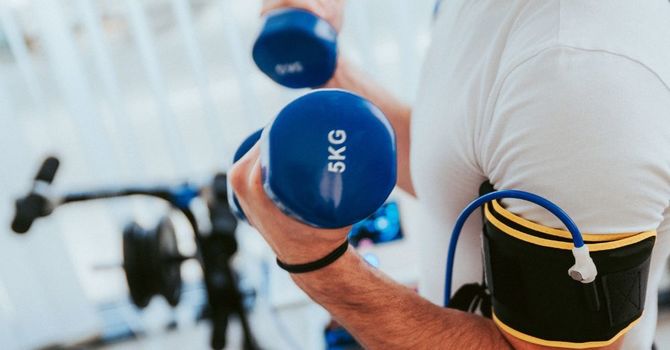
Swimming is a non-weight-bearing sport, and the chances of any injury are relatively low compared to other sports, such as running and jumping. However, it still requires intense training and a high level of endurance. Being a swimmer requires rigorous preparation and the ability to sustain prolonged effort to excel in the sport.
The repetitive motions in swimming can make swimmers prone to injuries of the upper limbs, knees, and spine. Many injuries originate from faulty techniques or mechanisms. Injured athletes require an assessment of their swimming biomechanics to find out any potential errors that may result in further injuries.
Who is at Risk for Swimming Injuries?
Your risk of getting injured while swimming depends on how much time you spend swimming and the strokes you use. Swimmers who focus on the butterfly or breaststroke have a greater chance of experiencing lower back injuries, whereas the breaststroke increases the likelihood of knee injuries. Those who engage in synchronized swimming, triathlons, or swim frequently in open water face a higher risk of getting a concussion.
The most common swimming technique-related injury is swimmer’s shoulder, a condition that can result in swelling and impingement in the shoulder joint. It is normal to experience overuse-related muscle and joint discomfort for anyone who performs more than 500,000 strokes annually.
At 1stChoice Sports Rehab, we believe that awareness and prevention are the best treatments for any swimming injuries. Here is a common list of injuries that swimmers face:
Causes of Swimming Injuries:
• Overtraining.
• Not resting enough.
• Poor stroke technique.
• Poor breathing.
• Poor flexibility or range of motion.
• Weakness in the rotator cuff muscles
• Weak core muscle strength or stability.
• Decreased strength in the muscles around the hip.
Common Swimming Injuries
1. Swimmer’s Shoulder:

Regular arm movement in swimming techniques can result in strains for rotator cuffs or shoulders/arm muscles. The repetition of these motions can cause damage if you don’t follow regulations. Experts estimate that nearly all regular swimmers can experience some level of shoulder discomfort, which may temporarily hinder swimming. Swimming shoulder commonly results from the freestyle stroke.
Swimming shoulder refers to several injuries that result from repetitive motion of moving arms. The injuries are:
• Bicep tendonitis
• Bursitis
• Rotator cuff impingement
• Rotator cuff tears
Preventative Measures: Ensure that your stroke techniques are correct. Pay attention to how your hands enter the water. Make sure all parts of your hand touch the water together rather than entering with just your thumb.
2. Neck Injuries:
Swimming can create significant strain on the neck as well. If there is not enough trunk rotation during the freestyle, excessive neck rotation will likely occur resulting in a lot of neck pain and stiffness. Bilateral breathing can help reduce the strain on the neck by rotating the head in both directions while breathing.
Preventative Measures: Keep your head aligned with your spine while swimming. Rotate the entire body instead of twisting your neck to breathe. Mastering the technique will help you prevent potential damage to neck movements. It is the best preventative measure for common swimming injuries.
3. Breaststroke Swimmer’s Knee:
The breaststroke is an easy and calm swimming style for fun settings. But in professional settings, the breaststroke can be very tiring. Sometimes, swimmers place their knee poorly while performing the ‘whip kick’ movement in breaststroke, and it can cause too much pressure on the knee joint and collateral ligaments. It can cause swelling, inflammation, and knee pain.
Preventative Measures: Do not only focus on sessions that involve breaststroke; practice other strokes as well. Improving the angle at which your leg moves away from your hip can help prevent unnecessary stress on your knees. Ensuring adequate hip flexibility is key to minimizing the stress to the knees. If a swimmer has difficulty externaly rotating the hips, the knees tend to get over strained, resulting in injuries and pain.
4. Swimmer’s Ear:
While Swimmer’s Ear is not related to orthopedics, it is still a common issue. Swimmer’s ear is a painful consequence of spending too much time swimming in the pool or ocean. Swimmer’s ear commonly occurs due to water not draining properly from the ear.
The most common symptoms are:
• Sensitive outer ear
• Muffled hearing
• Itching
• Clogged ear canals
Mild cases can worsen, and patients may experience swelling and fever.
Preventative Measures: Avoid using potentially dirty water bodies and swab your ears after swimming.
5. Lower Back Pain:
Lower back pain is also a common injury among people who do butterfly and breaststroke. The spine frequently hyper extends as the swimmer drives their body forward through the water. Poor abdominal strength often results in swimmers to lift their head and their hips and legs sink. Poor technique essentially causes them to “pull” on the lower back in a way that leads to pain.
Preventative Measures: Improve your swimming techniques and build up core strength. Strong core muscles support your lower back. Planks and Pilates can help you strengthen the core muscles.
Conclusion:
Continuing exercise while experiencing discomfort can worsen injuries. Awareness and preventative measures will help you stay healthy while swimming. At 1st Choice Sports Rehab, we are your trusted pain management-certified sports chiropractors to help you treat and overcome these conditions. Book your appointment today with us if you want more information about swimming or other sports injuries.


